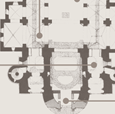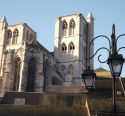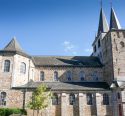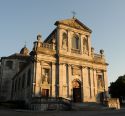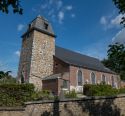Church | 1621 | Classical | Catholic Church





Map
Opening hours
01 April - 31 October
Mon 9.00 - 18.00
Tue 9.00 - 18.00
Wed 9.00 - 18.00
Thu 9.00 - 18.00
Fri 9.00 - 18.00
Sat 9.00 - 18.00
Sun 9.00 - 18.00
01 November - 31 March
Mon 9.00 - 17.00
Tue 9.00 - 17.00
Wed 9.00 - 17.00
Thu 9.00 - 17.00
Fri 9.00 - 17.00
Sat 9.00 - 17.00
Sun 9.00 - 17.00
Description
The history of the sanctuary began with a chapel dedicated to the Virgin Mary, which had existed since at least 1501. It housed a wooden statue of the Virgin and Child, dated between 1450 and 1475. Around 1595, the town suffered devastation due to a Dutch occupation, which led to the deterioration of the chapel and the statue. In 1621, a woman from Huy attempted to transport the statue in her bundle of wood, but it became impossible to move. This event, considered a miracle, is documented in the archives of Huy.
In 1624, a new church was built to accommodate the many pilgrims. In 1663, the first seven-yearly procession was instituted, and these celebrations continue to be held every seven years.
The church, built between 1624 and 1628, was enlarged in the 19th century by the Dominicans, who added side chapels, a monastic choir and the large jubilee tower. The ceiling of the church, painted by Adolphe Tassin between 1890 and 1891, illustrates the Mysteries of the Rosary. The church also houses numerous stained glass windows, sculptures and religious objects, some of which date back to the 17th century.
Among the notable figures associated with the sanctuary, Father Dominique Pire, winner of the Nobel Peace Prize in 1958, is buried in the Sarte cemetery.
Remarkable elements
Statue of Our Lady of La Sarte
The miraculous statue of Our Lady of La Sarte, made of polychrome wood, measures 83 cm high. It is displayed on the high altar, adorned with a velvet cloak, a crown and a sceptre. Restored several times, it is a symbol of Marian devotion.
Chapel Trail
The chapels are not part of the building but are closely linked to the sanctuary.
There are seven of them, representing the seven sorrows of the Virgin Mary. There are six chapels and the seventh is in the entrance porch.
Original Chapel
This was the site of the first sanctuary before it was enlarged. It is also the site of the miracle of the bundle of sticks.
This is why it houses the seventh chapel on the Chapel Trail.
Stained glass windows in the choir
The stained glass windows in the choir recount the history of Notre-Dame de la Sarte.
Stained glass windows in the apsidioles
The stained glass windows in the apsidioles recount the seven sorrows of the Virgin Mary.
Painted wooden ceiling
The ceiling of the church, created between 1890 and 1891, is the work of the Liège painter Adolphe Tassin. It consists of a set of 15 panels illustrating the Mysteries of the Rosary. This set was restored between 1999 and 2004.






